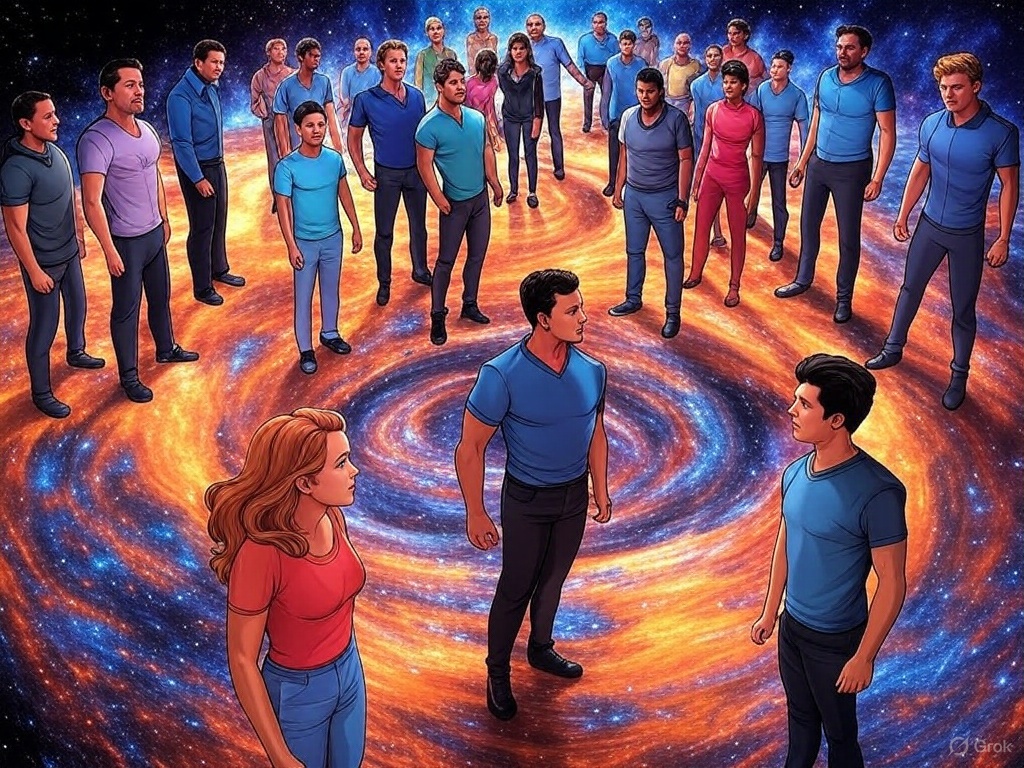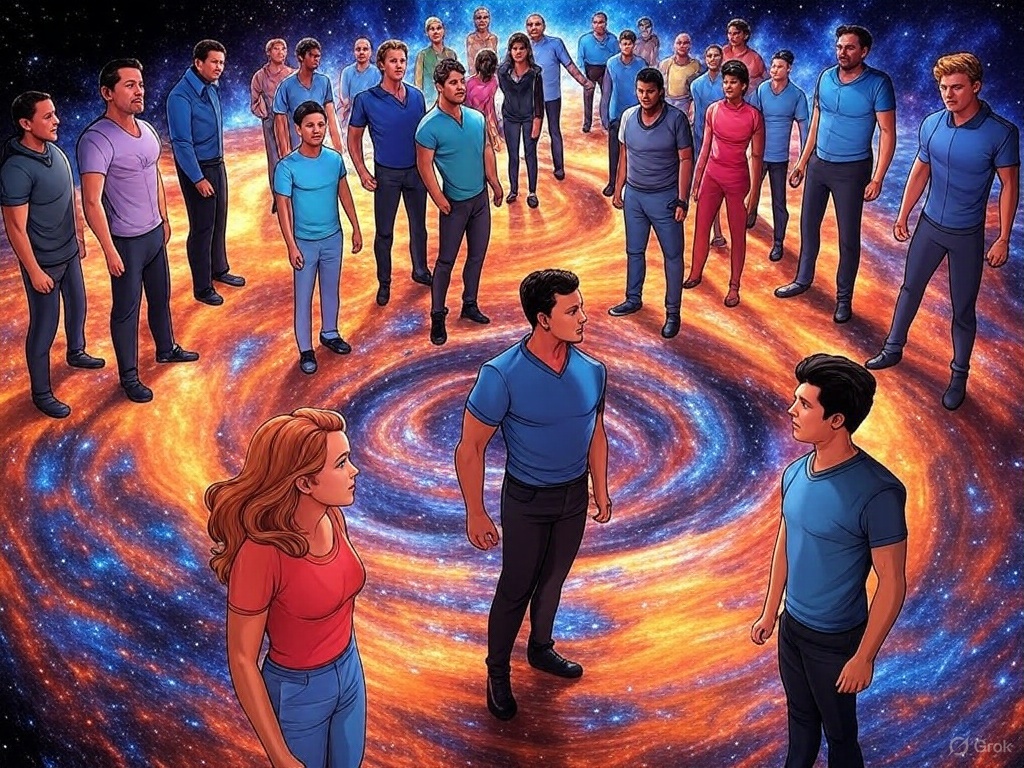Imagine the universe as a comic book page—except instead of flat ink on paper, we’re characters sketched across a three-dimensional "surface," oblivious to the extra-dimensional reality beyond our edges. Now picture that surface as the event horizon of a black hole, not in our familiar 3D space, but in a wilder, four-spatial-dimensional cosmos. This mind-bending idea might just rewrite the origin story of everything we know—and even explain why we’re here at all.
Black holes are already cosmic oddities in our 3D world. When a massive star dies, it collapses under its own gravity, forming a point of infinite density—a singularity—shrouded by an event horizon, a 2D sphere where light itself can’t escape. The dimensionality is key: the horizon is always one spatial dimension less than the space around it. So, in a universe with four spatial dimensions (plus time), a collapsing star would birth a black hole with a 3D event horizon—a hypersphere, curved and vast. What if that hypersphere is our universe? What if we’re living on the boundary of a higher-dimensional abyss?
This isn’t as far-fetched as it sounds. Physicists have long toyed with extra dimensions—string theory demands them, and brane cosmology imagines our 3D reality as a "brane" floating in a higher-D "bulk." But here’s the twist: instead of a brane, our 3D existence could be the fallout of a 4D star’s collapse. Picture it: a colossal star in this 4D realm implodes, its gravity warping spacetime into a black hole so massive its 3D horizon spans the scale of our observable universe—46 billion light-years across, give or take. The energy of that collapse doesn’t just vanish; it seeds a new reality—ours—etched onto that boundary.
Here’s where it gets juicy: this setup might solve one of cosmology’s biggest head-scratchers—why our universe is full of matter but almost devoid of antimatter. In theory, the Big Bang should’ve churned out equal amounts of both, only for them to annihilate each other into pure energy. Yet, here we are, made of matter, with antimatter a rare guest. In a 4D universe, the rules could differ. Maybe that parent star had an asymmetry—some quirk of higher-D physics favoring matter over antimatter. When it collapsed, that bias got locked into the 3D horizon, filtering our universe into a matter-dominated realm. We’d be like comic characters inheriting the ink of our artist’s pen, unaware of the 4D hand that drew us.
But wouldn’t a black hole evaporate? Stephen Hawking showed they leak mass via quantum radiation—virtual particle pairs popping up near the horizon, one falling in, the other escaping. Small black holes vaporize fast, but big ones linger. A cosmic-scale 4D black hole, with a mass matching our universe’s energy (think 10^53 kilograms), would be so cold—its "temperature" dwarfed by the cosmic background—that evaporation would take longer than the universe’s age. It’d stick around, a stable canvas for our 3D story. Or maybe the 4D realm feeds it, keeping our page from fading.
Spin adds another layer. A rotating 4D black hole (think Kerr, but upgraded) could twist its 3D horizon, mimicking the expansion we see in our universe. That accelerating stretch we attribute to dark energy? It might be the shadow of 4D gravity at work. We’d be flatlanders, sensing only the ripples of a deeper dance.
This idea’s a thought experiment, not a textbook fact—yet it echoes real science, like the holographic principle, which says a volume’s info can live on its boundary. Our matter, stars, and galaxies could be projections of a 4D reality we can’t peek into. It’s wild, sure, but it’s a reminder: the universe might be weirder than our 3D minds can grasp. Next time you stargaze, consider—you might be gazing across the edge of a cosmic comic strip, drawn by a 4D artist long gone.

We might be stuck as characters on a cosmic comic strip—our three-dimensional universe sketched onto the event horizon of a four-dimensional black hole—but that doesn’t mean the story ends there. Like ink smudges or creases on a page, the universe could be leaking clues about its higher-dimensional roots. We can’t peek beyond our 3D boundary, but with the right tools, we might just "feel" the 4D hand that drew us.
Last time, we imagined our universe born from a 4D star’s collapse, its 3D horizon becoming our reality—a vast, curved canvas 46 billion light-years wide. We wondered if the matter-antimatter mystery (why we’re here, not annihilated) was etched in during that birth. Now, let’s flip the page: if we’re trapped on this hypersurface, how do we spot the extra dimension? The answer lies in anomalies—tiny quirks in particles, gravity, and cosmic messengers that don’t quite fit our 3D rulebook.
Take particles with strange masses. The muon, a hefty cousin of the electron, weighs in at 105.7 MeV—207 times its lighter kin. The top quark, a staggering 173 GeV, dwarfs other quarks like the bottom at 4.2 GeV. These gaps feel random in our Standard Model, but in a 4D setup, they might be echoes of a compactified dimension. Picture it like a guitar string looped tight: each vibration adds mass, creating a "tower" of particles. If our 3D horizon hides a 4D curl, the muon or top could be higher notes—clues to the size of that unseen loop. The Large Hadron Collider’s hunting for such towers, and a muon anomaly in recent g-2 experiments (a wobble in its magnetism) might already be whispering 4D secrets.
Then there’s the supermassive black hole at our galaxy’s heart, Sagittarius A*. Its 4 million solar masses warp spacetime into a gravitational pit, bending light into the shadow we’ve photographed. But what if that warping is more than 3D gravity? Imagine it as a 4D "bump" on our horizon—a depression we feel as curvature. If a supernova explodes behind it, neutrinos—those ghostly particles that slip through everything—could graze its edge. A tweak in their paths, energies, or timing might betray a 4D ripple, like feeling raised ink on paper. Detectors like Hyper-Kamiokande could catch this if luck aligns a stellar blast just right.
Gravity itself might spill the beans. In 3D, it weakens with distance squared, but a 4D leak could shift that at tiny scales—say, a millionth of a meter—or show up as odd waves from black hole mergers. LISA, a future space-based detector, might hear extra vibrations from a spinning 4D parent. Even our universe’s expansion, blamed on dark energy, could be the horizon stretching under 4D spin—a cosmic clue we’ve misread.
We’re blind to the 4D bulk, sure, but these hints—mass oddities, neutrino quirks, gravitational glitches—are like smudges on our page. They suggest our 3D reality isn’t the whole story, that our comic strip has a deeper draft. The trick is catching them: a supernova’s rare, particle towers hide at high energies, and 4D signals could mimic 3D noise. Yet, with sharper tools—colliders, telescopes, detectors—we might trace the artist’s hand. Next time you ponder the stars, think: those twinkles might be footnotes to a 4D tale we’re just starting to read.
